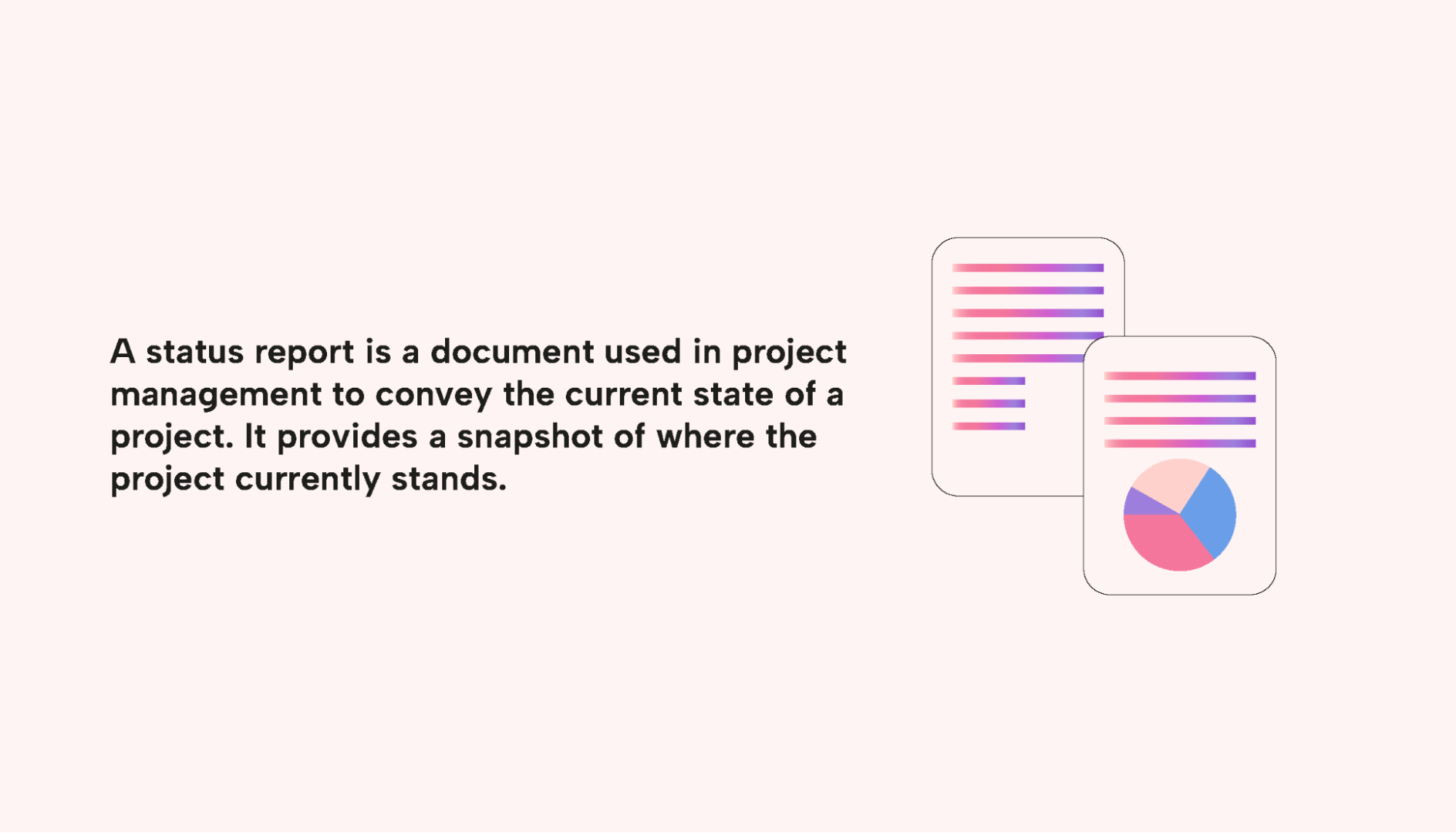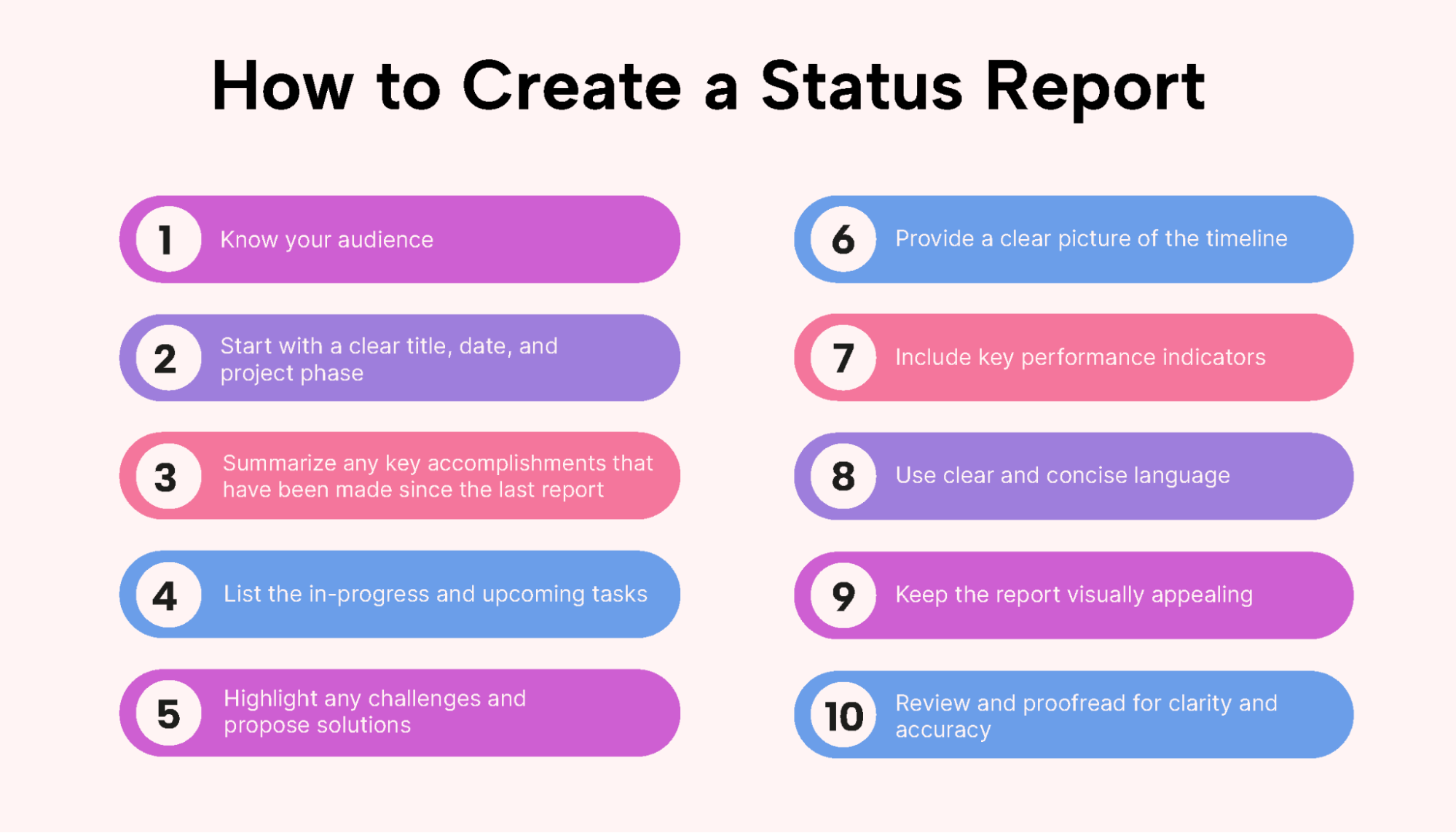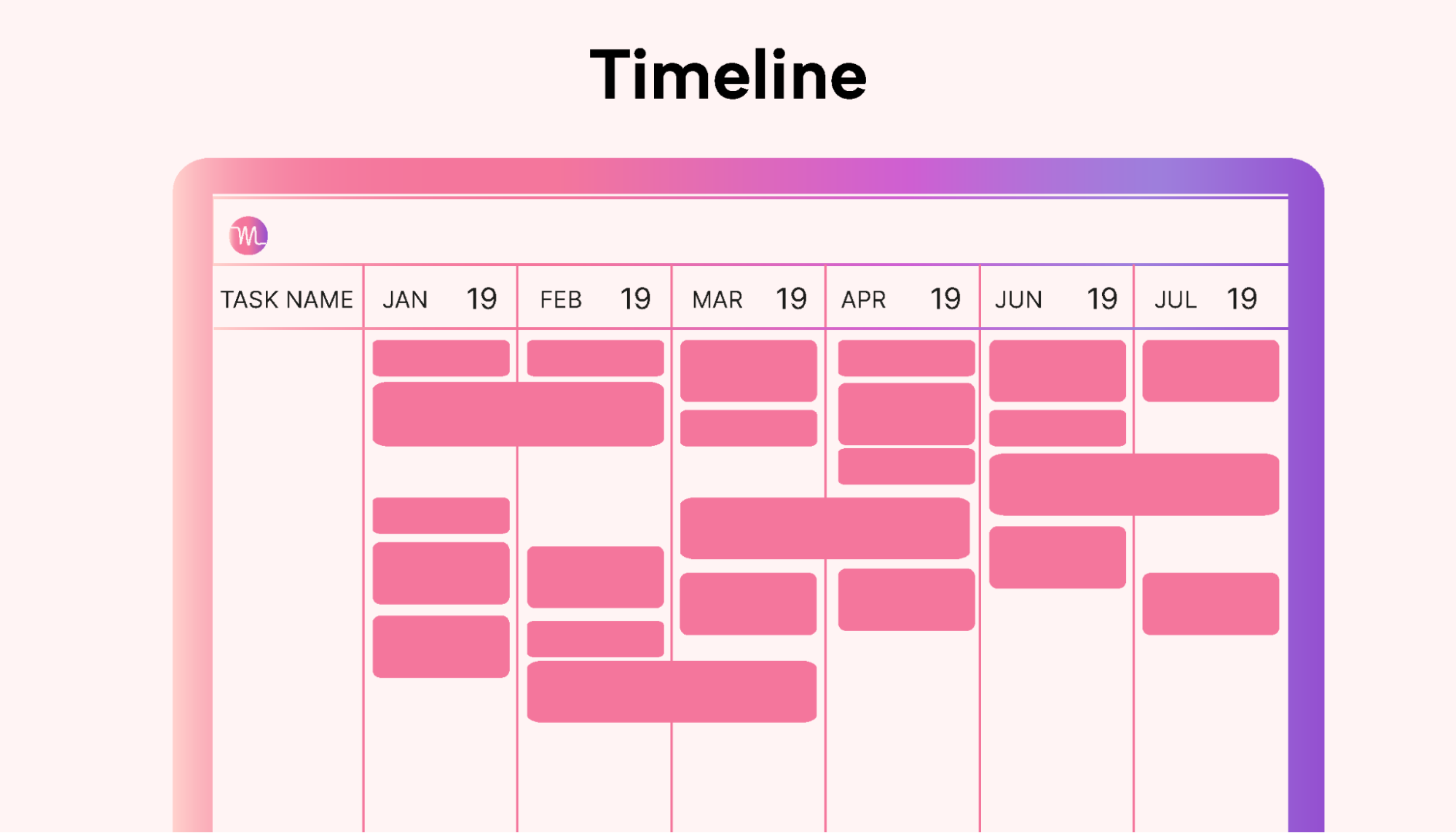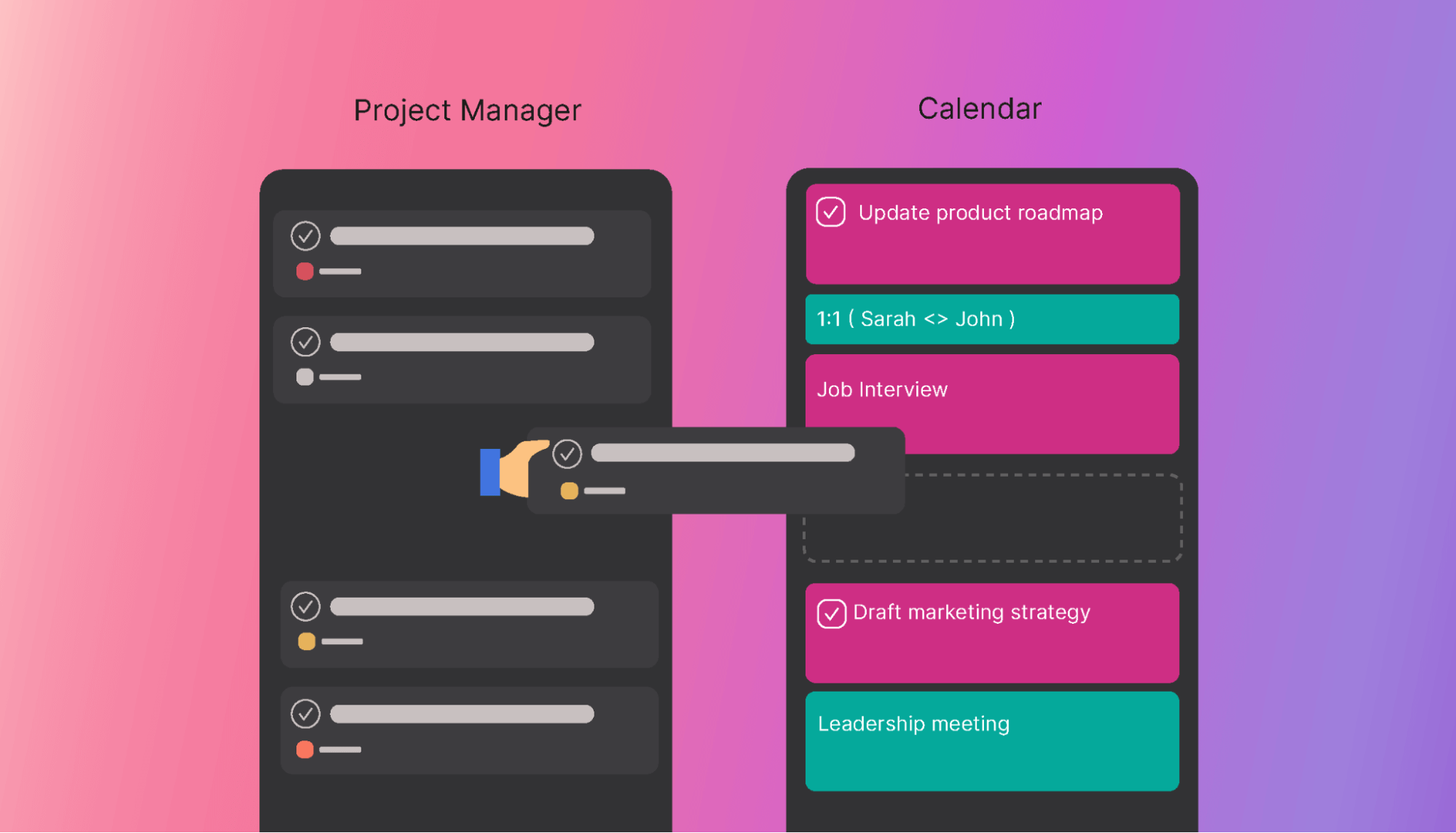A status report is a great way to keep team members, management, and stakeholders informed about a project’s progress.
But if the boss says, “Give me a status report,” do you know exactly what you should include? What should it look like? How do you update it for various phases of the project? And how do you present it to different audiences that have a stake in your project?
In this article, you’ll learn the ins and outs of project status reports, including what they’re used for, what they should include, how to produce a good one, and how to present a report to key stakeholders.
What is a status report?
A status report is a document used in project management to convey the current state of a project. It provides a snapshot of where the project currently stands.
 |
This report highlights any accomplishments, upcoming tasks, challenges faced, and deviations from the original plan. It also provides a historical record of project milestones and decisions.
Key features of a project status report
Status reports can be generated daily, weekly, bi-weekly, or on any other predefined schedule. How often you create them depends on the nature of the project and external and internal stakeholders’ needs.
A status report can be highly detailed for internal teams or offer a high-level overview for executive stakeholders. At the end of the day it provides the necessary data for stakeholders to make informed decisions.
Status reports keep all team members on the same page and working toward the same goals. They include a comparison between planned and actual progress so that the team can adjust as needed.
While the content of status reports varies, the format is usually standardized for consistency and ease of understanding.
What should a status report include?
Though status reports vary by company, the following essential elements should be included:
- Summary of completed tasks
- Summary of upcoming tasks
- Overview of potential or actual problems, risks, and other issues regarding the project
- Any changes made to the project timeline or scope
- Key metrics or performance indicators (KPIs) related to the project
These elements can then be adjusted according to company needs.
How do you write a good status report?
Here are 10 steps to help you write stellar status reports.
 |
1. Know your audience
Determine who will be reading the report ( executives, project team members, or clients). This will indicate what kind of information to prioritize and what level of detail to include. For instance, executives want high-level overviews and important progress and decision points, while project teams benefit more from detailed updates.
Tailor the language and terminology to the familiarity and expertise of the audience. Avoid jargon and in-house abbreviations unless your audience is used to them.
Also, consider the preferred format or medium for the audience. Your audience might benefit from a video presentation, a written report, a PDF, or simply an email update.
2. Start with a clear title, date, and project phase
Use a descriptive title for the project’s name and the report’s purpose. Ideally, this will reflect how the project is described in the organizational business plan.
Always include the reporting period, and make sure the date reflects that period and not the creation date. For example, “Weekly Status Report: Aug 1–7, 2023.”
Also include the project phase or milestone if applicable, such as “Implementation Phase” or “Midpoint Review.”
3. Summarize key accomplishments since the last project report
Consider including the following in your status report to show a project’s progress:
- List the current status and key milestones reached or tasks completed.
- Specify whether the report includes any urgent or critical updates.
- Highlight any achievements that went above and beyond expectations.
- Provide quantifiable results, where possible. For instance, “The team completed five out of the six tasks in the project plan.”
- Mention any positive feedback or recognition received from stakeholders.
Keep this section concise to quickly inform readers of any major progress made on the project.
4. List tasks that are in progress or upcoming
Next, cover the status of ongoing tasks and those that are set to begin.
Provide a brief description of each critical task, and indicate the expected completion date or any changes made to the schedule.
Highlight dependencies, if any, between tasks so that readers can see how the stepping stones of the project are unfolding.
5. Highlight any challenges or issues and propose solutions
It’s important to also cover the project’s health and any potential challenges you foresee with the upcoming tasks.
For each project blocker, clearly describe the problem, its impact, and its root cause. Then, mention the steps taken to address the issue. In this process, it’s important to be transparent but avoid laying blame. Rather, propose potential solutions or workarounds, and indicate specific support or resources stakeholders could provide to move the project forward.
6. Provide a clear picture of the timeline
Timelines are high on most stakeholders’ lists, so highlight any deviations from the original plan that affect the completion date. It’s helpful to use visuals like Gantt charts for timeline clarity.
 |
Provide reasons for any schedule changes, whether they are delays or accelerations. Indicate any upcoming major milestones or deliverables and predict potential future disruptions, if possible.
7. Include metrics or KPIs
Use the report to update readers on project deliverables, relevant metrics, or KPIs. Make sure to update these for new iterations of the report, and use graphs, charts, or tables for optimal visualization.
Provide brief explanations for any significant changes in metrics and forecast potential future KPI trends based on current data.
8. Use concise language
Keep sentences and paragraphs short for ease of reading, and use bullet points, subheadings, and white space to break up long text blocks.
Be concise and factual, and avoid subjective or overly optimistic language that could make readers question the information in the report.
9. Keep the report visually appealing
For visual quality, use a consistent font that’s easy and pleasant to read. Use capitalization, bolded text, and italics sparingly so that when you need to emphasize an important detail, it will really stand out.
Use plenty of visuals, like charts, graphs, and images, strategically to break up the text. Doing that will give your report a comfortable balance between text and visuals.
Lastly, avoid clutter. Every element you include should serve a purpose — if it doesn’t, you’re better off leaving it out.
10. Review and proofread the draft for clarity and accuracy
Make sure that all information is accurate and up-to-date — especially if your report is an updated version of a previous one. The reality is that it’s easy to overlook data that’s changed between iterations.
Check for grammar, spelling, and punctuation errors, and ensure all visuals are legible and relevant.
It’s good practice to get feedback from a colleague or team member before finalizing the report and sharing it with stakeholders or project sponsors.
Common mistakes to avoid in status reports
Here are some things to watch out for when drafting a status report:
- Be careful not to overload readers with information — especially details that don’t really matter to understanding how the project is progressing.
- On the other hand, while brevity is good, omitting vital details or being unclear about them can leave readers puzzled about the project’s true status.
- Leaving out setbacks or challenges can erode trust over time. If project schedules or key objectives change, the stakeholders need to know why — and what’s being done about it.
- Loading your report with unnecessary jargon or technical language can confuse stakeholders who are unfamiliar with the terminology and can make the report harder to digest.
- Inconsistency in the format or structure will make it harder for readers to find information quickly.
- Changing the KPIs or metrics from one version of the report to another without an explanation can confuse stakeholders who need to stay up to date on the project’s progress.
 |
Using automation or templates for writing status reports
Automating your reports by using online report templates reduces the time spent designing and formatting each report from scratch. Automation also provides consistency in look and feel.
 |
Plus, automated tools can pull data directly from other systems, reducing the chances of manual input errors. For instance, Motion’s AI Project Manager and Task Manager features store valuable project history data that can be used to populate status reports.
How to customize templates to fit specific project needs
Tips for customizing online templates:
- Start with a generic status report template and adapt it according to the project’s unique features.
- Incorporate company logos, color schemes, and other branding elements.
- Design the sections in such a way that they can be easily added or removed based on each report’s unique needs.
- If possible, integrate fields that can pull data automatically from project management tools or databases.
How do you present a status report?
If you have to present your status report in person, here are some pointers for doing so effectively and convincingly:
- Use clear, concise language. Focus on giving summaries; the listeners can read the details in the report.
- Structure the presentation logically. Move from high-level overviews to detailed discussions to ensure a smooth flow of information.
- Begin with a succinct summary that captures the project’s essence and highlights key achievements and challenges.
- Use visuals, like charts and graphs taken from the report, to present complex data in an easy-to-digest form.

- If appropriate, engage your audience with interactive elements or open discussion periods to answer questions and address concerns.
- Conclude with clear next steps or action items.
Ready to create your stellar project status report?
Status reports are useful for keeping a project on track and ensuring management and stakeholders remain informed about its progress.
Creating impressive reports is not that hard. Just follow the steps outlined in this article, and you’ll be well on your way to delivering great status reports.
And remember to check out Motion’s Project Manager and Task Manager features for your project management software.





